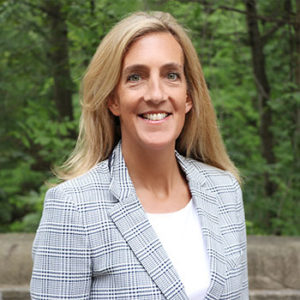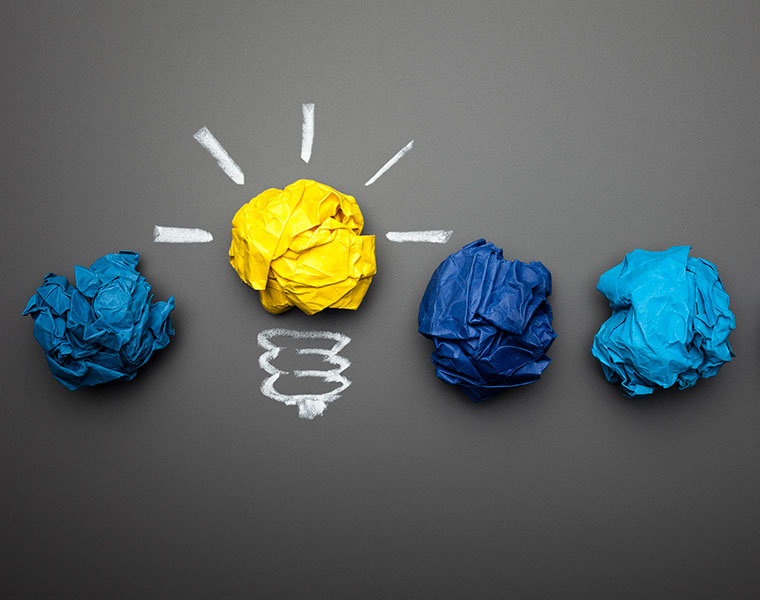By Jean Whatley
It’s not an on/off proposition. To remain competitive, lighting manufacturers and distributors are quickly evolving from mere transactional sales to consultancy relationships with customers, whether its entire municipalities or a single enterprise. Moving beyond foundational LED technology to the myriad of possibilities around sensor-based software and digital networks, knowledge is key. We recently spoke with Ira Greenberg, CEO of Keystone Technologies and Melissa Wesorick, GM, LED Platforms, Current, powered by GE, about the steady pace of product development and the important role distributors play in educating themselves and their customers.
Q&A with Keystone’s Ira Greenberg:

lightED: Has the explosion in the lighting market in recent years surpassed your expectations?
Greenberg: The acceleration of adoption was faster than we expected and, frankly, I think the decline of the legacy technology also happened faster than we expected. I think, fortunately, we were progressive enough to move along the technology evolution as the market was changing, so Keystone has done quite well in the transition; but it’s been quite a surprise to see how fast disinterest in the legacy technology has happened, despite some of them performing quite well relative to some of the newer technologies.
What has surprised me also is the adoption of a bunch of categories of products that for a long time, consumers didn’t find all that attractive, either from a performance standpoint or an aesthetic, which have now become kind of mainstream. Sometimes it takes a little time for the ugly automobile to become the new hot thing, like when the style kind of comes around to it, but some of the newer styles of the LED products that at first looked a little awkward, have actually become successful products in the marketplace.
lightED: Why do you think consumers so readily abandoned the legacy lighting technologies?
Greenberg: I think there are a number of reasons. One, I think there has been so much hype around LED, the federal government has been pouring a ton of resources into it—the Department of Energy, etc.—so there’s a tremendous amount of buzz around it. For better or for worse, there’s a lot of excitement, which I think has been a major driver. The clean energy story is very compelling, especially when people are buying based on return on investment and paybacks, in many cases in less than a year. The economics of upgrading to LED are easily understood. People always point to the long-life ability as a major selling point, but in practice that’s more hype than actual benefit, because lighting systems themselves are changed out before the expected 50,000 hours or 70,000 hours or whatever, comes up. It might lower maintenance costs, but those people will probably not see the end of the lifetime of the bulb not because it fails, but because they’ll be on to something new, some new design, some new aesthetic preference.
lightED: What will be the key drivers in the US lighting market in the near-term (now to 2020)?
Greenberg: There have been lots of energy rebates. Certainly in the commercial space, there have been tons of conversions. As long as those incentives remain in place, they only enhance the economics of the conversions, so obviously that’s a major driver as well.
If the incentives stay in place, that will definitely continue to fuel growth, but I don’t think the incentives will expand. In other words, I don’t think the utility companies are going to offer more per watts saved. If anything, it would taper in the opposite direction, because the cost of the product itself now is compelling enough without an additional incentive on top of that for a consumer to switch. It is possible that incentives from utility companies may start to wane a little bit because of the lower up-front costs as they are.
There’s some uncertainty around the new administration as to how much federal money will be available for energy efficiency upgrades, so I don’t think the climate is improving for more rebates. As long as they stay where they are though, the amount of the rebates are still quite frothy and I think it will continue to fuel demand. Also, as efficiency standards are raised, that will continue to keep the utility companies interested and keep consumers interested in the next higher efficiency level technologies. So, as much as we tend to hate the DLC (DesignLights Consortium) from a point of needing to reinvent our products every 18 months… as a company, I’ve had to meet, to keep pace and stay ahead of the curve with the DLC. So it’s a kind of advantage to a company like ours. Raising the standards creates the interest and somewhat the capabilities of the new lighting technologies. There is a value in those organizations continuing to push the standards higher.
lightED: What does the future hold for light and connectivity?
Greenberg: I think there’s two pieces to it. First, there could be whole new business models around connectivity. Right now we sell products and once they’re out the door and we collect the money on it, we never see another dollar from that product again. When something all of a sudden becomes connected, just like software has gone, when it was an off-premise product, and now it’s in the cloud system, now people pay for units or per month, it’s a subscriber service. I could easily see lighting turning into a subscription, rather than a upfront purchase. It could be a managed solution, where a lighting provider makes sure that the latest lighting is always in the ceiling or however it’s installed. But that’s what I think about with regard to lighting and connectivity—it becomes a data node, it ends up being information, more than lighting.
It’s almost like the way Google gives away the search and promotes the other services around it. So who knows what other things could be packaged with the connection into our ceiling? It really is a wide open, blue ocean situation where you never know what other tag-along product can come into the node. That’s the connectivity part.
Second, when I think about the controls and all the controllability, there’s so much hype about that. I do think it’s interesting, but in the vast majority of places, they just want the lights on or off and it doesn’t usually need to be so human centric, and individual user driven. As exciting as it sounds to be able to do all these full-building automation projects and a really granular level of control, most facilities, for one, today don’t have sophistication to handle that level of detail or the human resources to support the technological resources. If you look at businesses today, there are probably more businesses that use a standard computer environment versus a more sophisticated managed enterprise system, where you have an IT department to support it. Most companies have somebody on staff whose normal job is something else, but they also happen to manage the IT stuff. Now, all of a sudden, to have someone who’s responsible for managing the lighting on site? That needs to be somewhat of a technical person. In short, connected lighting has a tremendous amount of potential, but I think we have to be realistic about the types or number of applications that can really use it, and use it to its full advantage.
lightED: How will distributors play a role in the future of lighting sales?
Greenberg: It is absolutely all about education. The products are becoming more complicated, not less complicated and it will continue to be that way for some time to come. The distributor needs to be intimately familiar with the different products in the marketplace and how they integrate together. That’s a vital role that they’re going to have to play. We spend a lot of effort educating our distributor customers on our products, simply trying to be a resource in the lighting industry, not just for our products but other products as well. We’re happy to share our knowledge with them. Contractors and designers are one step removed from any kind of interfacing with the vendors and the manufacturers. The distributors do have that interface and do need to become intimately familiar with the products. They have to take a proactive approach to becoming experts int the products that are coming into the marketplace. So it’s staying open, it’s willing to listen to not just your existing vendors, but also to new vendors, because there’s interesting new products in the marketplace. It’s all about them becoming educated, being able to translate, being able to pull together information from all different vendors, boil it down to relevant information for their customer base and offer them solutions that squarely address the challenges of the market.
lightED: Can distributors serve as conduit for information and suggested solutions up and down the supply chain? In other words, let manufacturers know of specific challenges or instances where their customer needs a solution that just doesn’t appear to be on the market?
Greenberg: It really depends on how informed they are. The ones who will succeed are those who really understand different types of technology, how they install, why they’re a better fit for the customer, not why they’re a better fit for the distributor. Those are the ones who I think will be really successful as the products become even more complicated. If they keep sticking with whatever products the incumbent vendors provide to them, it’s possible that might not the best solution anymore. Distributors need to be open to learning from the industry and providing the best feedback as well.
In Keystone’s experience, we’re finding that the companies that are thriving are the distributors who have lighting experts on staff. I think that those are the ones who are winning because there are so many lighting projects right now. The distributors that are chasing lighting projects, the ones who are doing it successfully truly have dedicated lighting groups or staff; whether it’s one person or a few, they have a lighting expert. We enjoy a particular strength with those kids of distributors.
lightED: How will price impact the future of lighting?
Greenberg: All of us are driven by price to some degree. What we do see now is that people are willing to pay more. They’ll pay more upfront for an LED product that has high promise to perform. If you look at the price curve for LED, it’s a scary business to be in, but I think to a certain extent pricing has reached levels where if prices were to halve, I don’t think demand doubles. I think prices are low enough now that there is enough demand in the marketplace to capture whatever demand is out there. I don’t think it needs to go lower in order for LED and the new technology to become interesting to people. My hope is—and I’m already seeing it—that costs are stabilizing to a certain extent. I think what’s happening, as price goes down, companies either want to strip out features to keep prices lower or to keep features in to get prices higher. I think we’re at a point where we’re not seeing the same item just come out for less money, we’re seeing the product changing now. For example, we’ll see companies, instead of having a five-year warranty, might have a two or three-year warranty. They can save a little bit of money there. Or you might see products, instead of just having a basic set-up, might have an occupancy sensor built into it, so they get an extra five or ten dollars, whatever it is, for the fixture. So, as prices come down, either features need to go up to maintain margins, or features need to come out to support the lower prices.
lightED: What inspires you about being involved in this industry?
Greenberg: Keeping ahead of the technology is exciting. There’s never a dull moment, and we’re always trying to figure out the next interesting approach. We spend a lot of time figuring out how to differentiate ourselves. Even if we enter a product category that already exists, we think, “How do we make it different? How can we do something better than what’s already there.” Our philosophy is “light made easy” that’s our motto. That’s our DNA. So everything we do here is part of that idea—making products easy to install, and whatever we need to do to do make it easy for customers to interact with us. That’s what drives me every single day, fulfilling that promise and what it means to our customers and our employees, that’s what keeps me inspired.
Q&A with GE’s Melissa Wesorick:

lightED: Has the explosion of the lighting market in recent years surpassed your expectations?
Wesorick: Growth in the industry has largely met our expectations. For our commercial and industrial customers, converting to LED technology simply makes good economic sense—it’s a proven technology with a strong return on investment.
lightED: What will be the key drivers in the US lighting market in the near-term (now to 2020)?
Wesorick: The shift toward LED technology will continue over the next few years in the commercial and industrial segment, and we expect to see further adoption of spectrum-based lighting like grow lights, disinfection, and dynamic white lighting to leverage the unique capabilities of LED. More broadly, we think the future of lighting will increasingly be coupled with new kinds of sensor-based software and digital networks that will open new value streams for customers focused on generating better energy efficiency and higher productivity.
lightED: What does the future hold for light and connectivity?
Wesorick: Digital connectivity is the future of lighting. At Current, we are helping our customers build truly intelligent environments by combining energy infrastructure like LED and solar with new digital technologies that rely on smart sensors, controls and software. That means lights in the ceiling will double as a digital platform upon which apps can be built to improve energy efficiency and productivity. And though we’re still in the early days of this technology, we’re already seeing strong interest throughout the industry with large customers like JP Morgan Chase and the City of San Diego beginning to adopt digital at scale.
lightED: How will distributors play a role in the future of lighting sales?
Wesorick: Distributors will remain an important channel for many commercial and industrial customers. Increasingly, we expect more and more distributors to begin adopting digital technologies and accessories to supplement their offering, reflecting the broader industry trend. We believe distributors who are on the forefront of controls and digital integration will be best positioned to help their customers realize longer-term value.
lightED: How will price impact the future of lighting?
Wesorick: As lighting continues to become more digitally enabled, we are starting to think about pricing and costs in different ways. For Current, that means less focus on standard transactional product pricing and more focus on collaborating with our customers to generate outcomes they care about. We’re finding that our customers’ value story tends to get better as we combine these technologies. Savings generated from an initial LED installation can be used to fund a digital network that will provide energy and productivity improvements for years to come. We’re also working with our customers to explore new business models like energy-as-a-service, plus flexible financing solutions that help shift expenditures from capex to opex and keep our customers cash flow positive from the first day of installation.
lightED: What do you think the capabilities of light may one day become?
Wesorick: The hardware technology will continue improving in quality & application flexibility, especially with respect to the capabilities of spectrum-based and tunable lighting. But again, we believe lighting is about far more than simply providing light—we see it as the key toward creating an invisible digital network that can generate all kinds of additional energy efficiency and productivity improvements. In the future, our lighting could help with tasks like conference room management in office buildings, indoor wayfinding in retail, inventory tracking in manufacturing and industrial facilities and much more. For our customers, today’s lighting infrastructure will serve as the foundation for the intelligent environment of tomorrow.
Tagged with GE, Keystone, lightED
